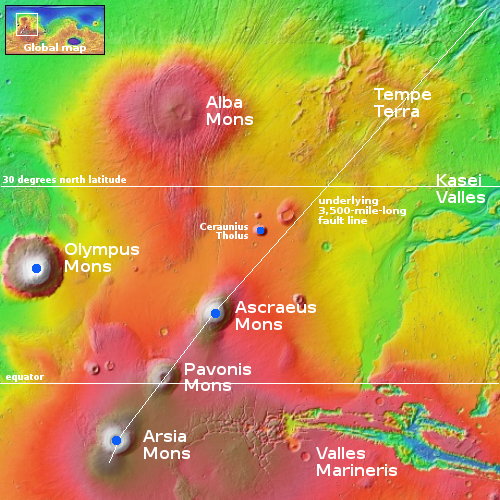Curiosity sees evidence of solar storm hitting Mars

Click to see original three-frame movie.
Cool image time! The picture to the right is a screen capture from a three-frame movie created from photos taken by one of the navigation cameras on the Mars rover Curiosity. The white streak and other smaller streaks were created by charged particles hitting the camera’s CCD detector on May 20, 2024, from a solar storm caused by the strong solar flares presently being pumped out by the Sun.
The mission regularly captures videos to try and catch dust devils, or dust-bearing whirlwinds. While none were spotted in this particular sequence of images, engineers did see streaks and specks – visual artifacts created when charged particles from the Sun hit the camera’s image detector. The particles do not damage the detector.
The images in this sequence appear grainy because navigation-camera images are processed to highlight changes in the landscape from frame to frame. When there isn’t much change — in this case, the rover was parked — more noise appears in the image.
Curiosity’s Radiation Assessment Detector (RAD) measured a sharp increase in radiation at this time – the biggest radiation surge the mission has seen since landing in 2012.
The view of this picture is to the south, looking towards the top of Mount Sharp, though that peak, more than 25 miles away, is not visible because the mountain’s lower flanks are in the way. A second movie showing similar charged particle streaks was taken looking south, with the rim of Gale Crater barely visible 20-30 miles away.

Click to see original three-frame movie.
Cool image time! The picture to the right is a screen capture from a three-frame movie created from photos taken by one of the navigation cameras on the Mars rover Curiosity. The white streak and other smaller streaks were created by charged particles hitting the camera’s CCD detector on May 20, 2024, from a solar storm caused by the strong solar flares presently being pumped out by the Sun.
The mission regularly captures videos to try and catch dust devils, or dust-bearing whirlwinds. While none were spotted in this particular sequence of images, engineers did see streaks and specks – visual artifacts created when charged particles from the Sun hit the camera’s image detector. The particles do not damage the detector.
The images in this sequence appear grainy because navigation-camera images are processed to highlight changes in the landscape from frame to frame. When there isn’t much change — in this case, the rover was parked — more noise appears in the image.
Curiosity’s Radiation Assessment Detector (RAD) measured a sharp increase in radiation at this time – the biggest radiation surge the mission has seen since landing in 2012.
The view of this picture is to the south, looking towards the top of Mount Sharp, though that peak, more than 25 miles away, is not visible because the mountain’s lower flanks are in the way. A second movie showing similar charged particle streaks was taken looking south, with the rim of Gale Crater barely visible 20-30 miles away.










